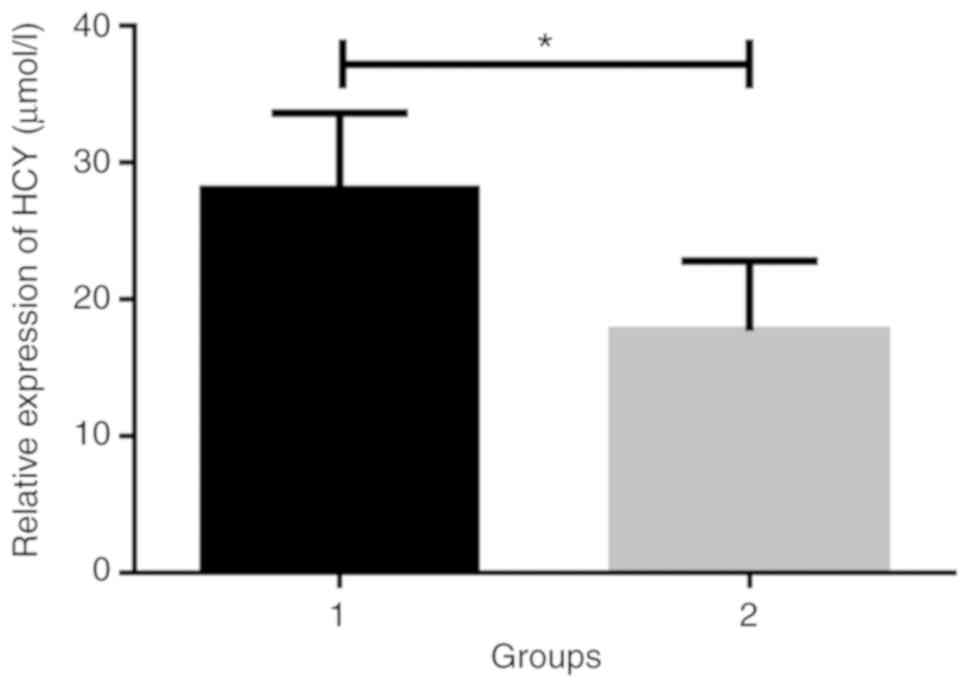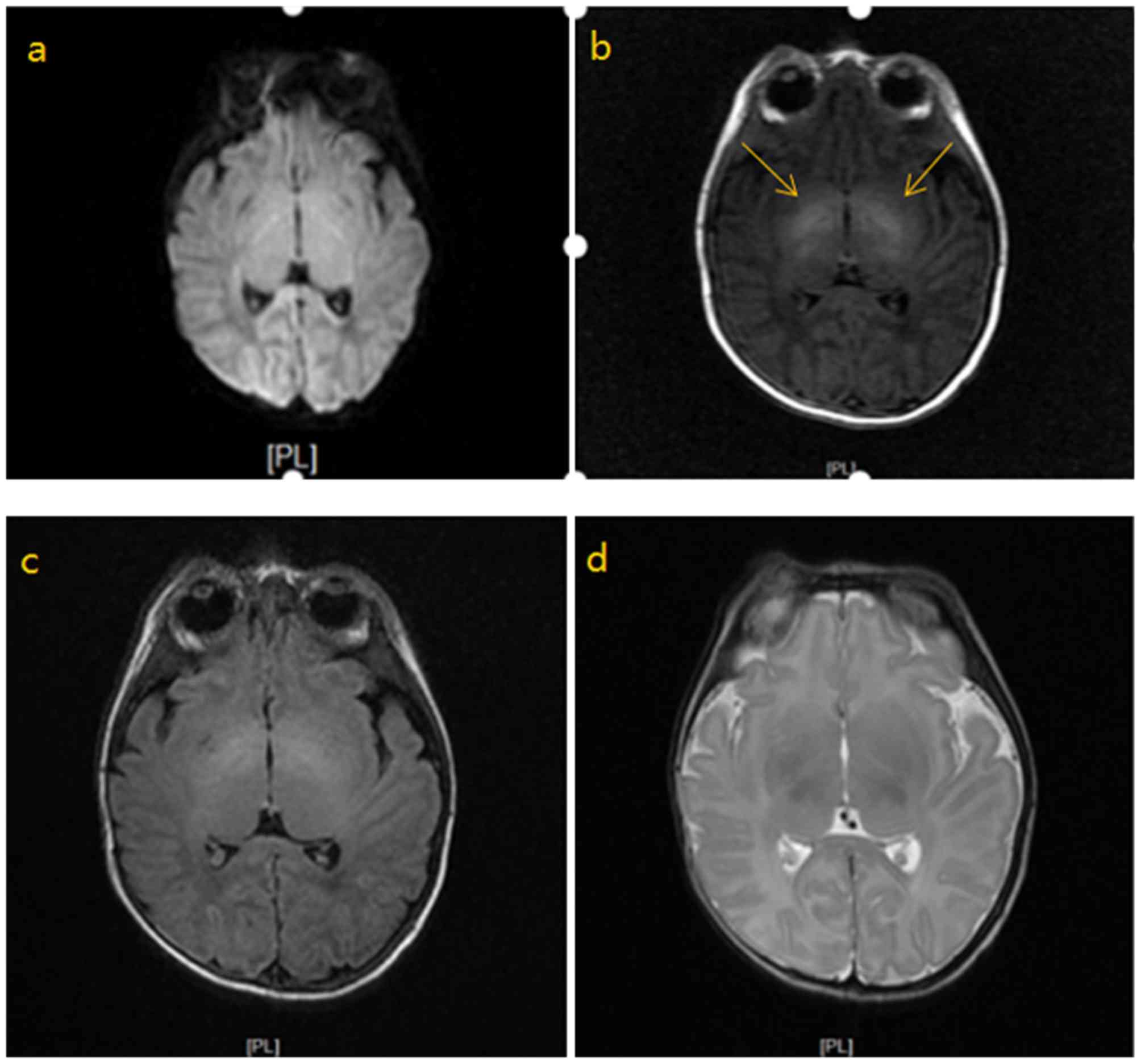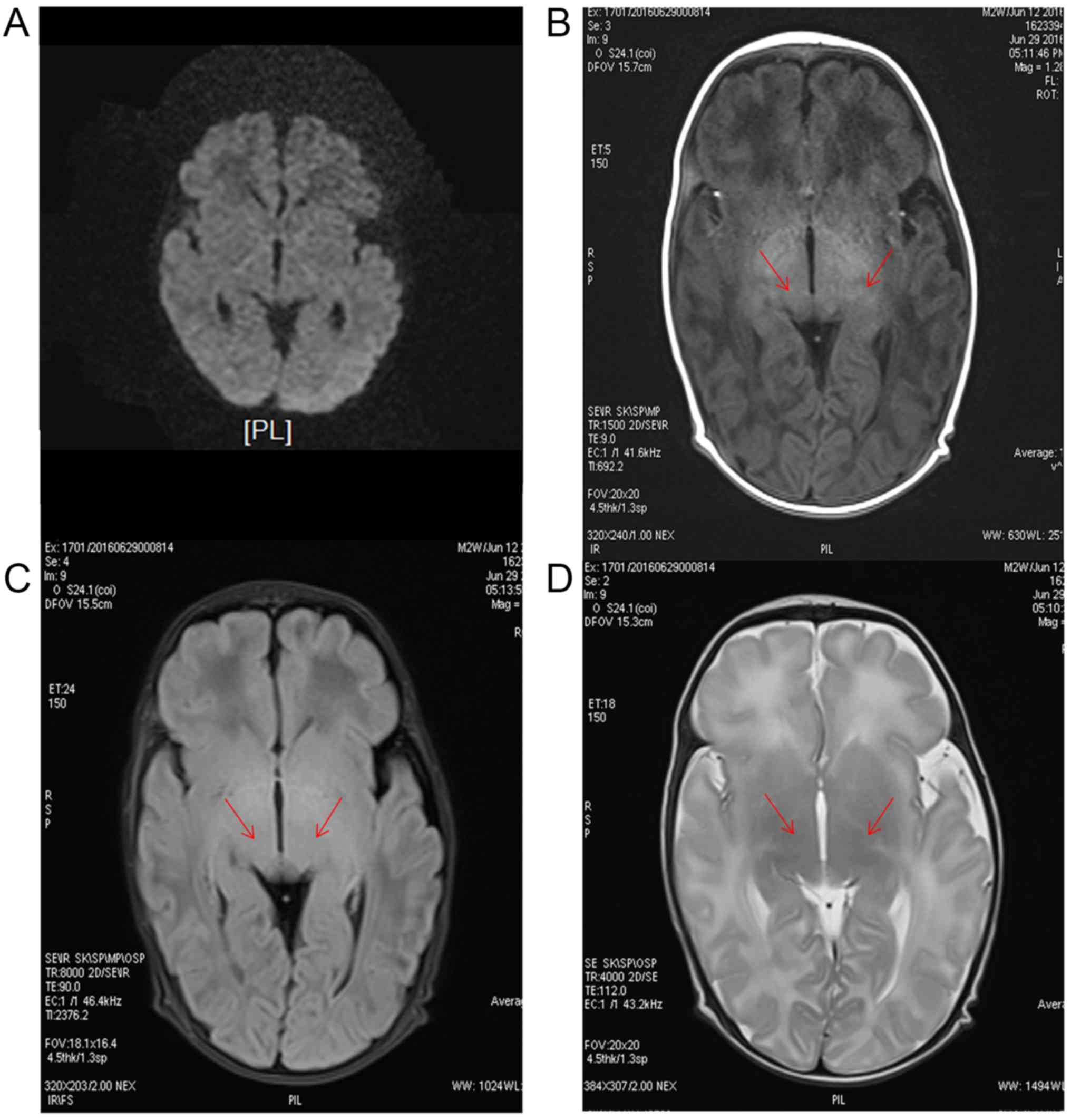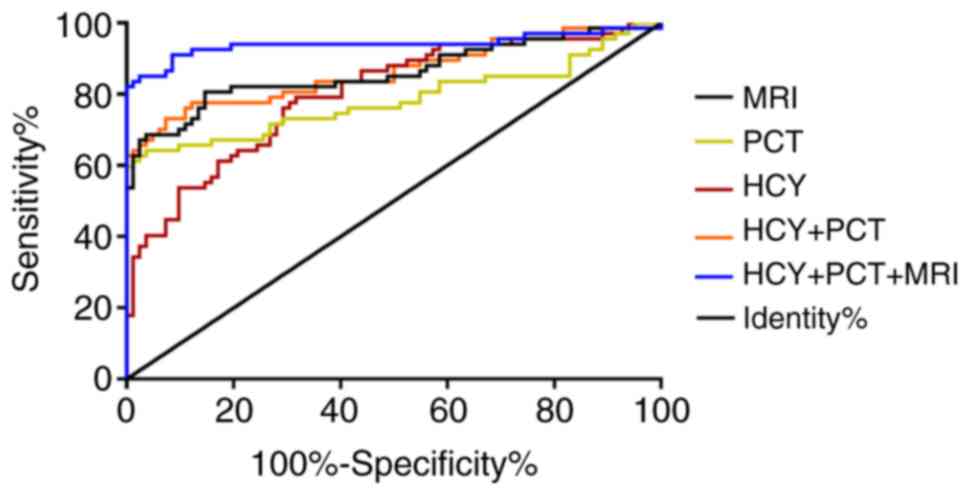|
1
|
Zheng J, Wei C, Zhao M and Zhao D:
Phototherapy is associated with the decrease in serum globulin
levels in neonatal hyperbilirubinemia. Biomed Rep. 10:63–69.
2018.PubMed/NCBI View Article : Google Scholar
|
|
2
|
Yu ZB, Han SP and Chen C: Bilirubin
nomograms for identification of neonatal hyperbilirubinemia in
healthy term and late-preterm infants: A systematic review and
meta-analysis. World J Pediatr. 10:211–218. 2014.PubMed/NCBI View Article : Google Scholar
|
|
3
|
Petersen JP, Henriksen TB, Hollegaard MV,
Vandborg PK, Hougaard DM, Thorlacius-Ussing O and Ebbesen F:
Extreme neonatal hyperbilirubinemia and a specific genotype: A
population-based case-control study. Pediatrics. 134:510–515.
2014.PubMed/NCBI View Article : Google Scholar
|
|
4
|
Kuzniewicz MW, Wickremasinghe AC, Wu YW,
McCulloch CE, Walsh EM, Wi S and Newman TB: Incidence, etiology,
and outcomes of hazardous hyperbilirubinemia in newborns.
Pediatrics. 134:504–509. 2014.PubMed/NCBI View Article : Google Scholar
|
|
5
|
Koziol LF, Budding DE and Chidekel D:
Hyperbilirubinemia: Subcortical mechanisms of cognitive and
behavioral dysfunction. Pediatr Neurol. 48:3–13. 2013.PubMed/NCBI View Article : Google Scholar
|
|
6
|
Smitherman H, Stark AR and Bhutani VK:
Early recognition of neonatal hyperbilirubinemia and its emergent
management. Semin Fetal Neonatal Med. 11:214–225. 2006.PubMed/NCBI View Article : Google Scholar
|
|
7
|
Maisels MJ: Neonatl jaundice. Pediatr Rev.
27:443–454. 2006.PubMed/NCBI View Article : Google Scholar
|
|
8
|
Qian-Qian F, Shao-Hua W and Department P:
The clinical progress in early diagnosis of bilirubin
encephalopathy. Med Recap. 20:1186–1189. 2014.
|
|
9
|
Shi-Xin FU, Kai-Zhong Z, Yan B, et al:
Imaging features and clinical outcome of MRI and MRS in children
with bilirubin encephalopathy. Chin J CT MRI. 16:11–13. 2018.
|
|
10
|
Monsef A and Eghbalian F: Evaluation of
diagnostic value of procalcitonin as a marker of neonatal bacterial
infections. Iran J Pediatr. 22:314–318. 2012.PubMed/NCBI
|
|
11
|
Czyzewska M, Lachowska M and Gajewska E:
Evaluation of diagnostic value of procalcitonin (PCT) as a marker
of congenital infection in newborns. Przegl Lek. 59 (Suppl
1):S46–S49. 2002.PubMed/NCBI(In Polish).
|
|
12
|
Kawezymksi P and Piotrowski A:
Procalcitonin and C-reactive protein as a markers of neonatal
sepsis. Cinekol Pol. 75:439–444. 2004.PubMed/NCBI(In Polish).
|
|
13
|
Zahedpasha Y, Ahmadpour M, Hajiahmadi M
and Haghshenas M: Procalcitonin as a marker of neonatal sepsis.
Iran J Pediatr. 19:117–122. 2009.
|
|
14
|
Weidong HE and Laboratory DO: Application
value of immature granulocyte, D-dimer, FDP and PCT detection in
neonatal hyperbilirubinemia. China Health Stand Manage. 7:145–147.
2016.
|
|
15
|
Bo G, Feng L, Guoxin X, et al: Clinical
significance of procalcitonin, C-reactive protein and myocardial
enzymes determination in patients with neonatal hyperbilirubinemia.
Int J Lab Med. 35:2441–2443. 2014.
|
|
16
|
Joshi MB, Baipadithaya G, Balakrishnan A,
Hegde M, Vohra M, Ahamed R, Nagri SK, Ramachandra L and
Satyamoorthy K: Elevated homocysteine levels in type 2 diabetes
induce constitutive neutrophil extracellular traps. Sci Rep.
6(36362)2016.PubMed/NCBI View Article : Google Scholar
|
|
17
|
Mangge H, Becker K, Fuchs D and Gostner
JM: Antioxidants, inflammation and cardiovascular disease. World J
Cardiol. 6:462–477. 2014.PubMed/NCBI View Article : Google Scholar
|
|
18
|
Curro M, Gugliandolo A, Gangemi C,
Risitano R, Ientile R and Caccamo D: Toxic effects of mildly
elevated homocysteine concentrations in neuronal-like cells.
Neurochem Res. 39:1485–1495. 2014.PubMed/NCBI View Article : Google Scholar
|
|
19
|
Wu F, Yang H and Liu B: Association
between homocysteine and arterial stiffness in women with a history
of preeclampsia. J Vasc Res. 56:152–159. 2019.PubMed/NCBI View Article : Google Scholar
|
|
20
|
Dan-Ni YE, Ling-Qing GE and Sheng-Lin YU:
Diagnostic significance of brainstem auditory evoked potential
combined with MRI in early neonatalbilirubin encephalopathy. Chin J
Child Health Care. 25:737–740. 2017.
|
|
21
|
Yan B, Kaizhong Z, Qian Z, et al:
Diagnostic performance compared of MRI and MRS in neonatal acute
bilirubin encephalopathy. Chin Imaging J Integr Tradit West Med,
2017.
|
|
22
|
Sgro M, Campbell D, Barozzino T and Shah
V: Acute neurological findings in a national cohort of neonates
with severe neonatal hyperbilirubinemia. J Perinatol. 31:392–396.
2011.PubMed/NCBI View Article : Google Scholar
|
|
23
|
Iskander I, Gamaleldin R, El Houchi S, El
Shenawy A, Seoud I, El Gharbawi N, Abou-Youssef H, Aravkin A and
Wennberg RP: Serum bilirubin and bilirubin/albumin ratio as
predictors of bilirubin encephalopathy. Pediatrics.
134:e1330–e1339. 2014.PubMed/NCBI View Article : Google Scholar
|
|
24
|
Wisnowski JL, Panigrahy A, Painter MJ and
Watchko JF: Magnetic resonance imaging of bilirubin encephalopathy:
current limitations and future promise. Semin Perinatol.
38:422–428. 2014.PubMed/NCBI View Article : Google Scholar
|
|
25
|
Xiao-Li M, Lei Z, Xiao-Hu W, et al:
Analysis of MRI signal characteristics of neonatal severe
hyperbilirubinemia. Chin J Magn Reson Imaging. 9:768–772. 2018.
|
|
26
|
Lin N, Qin S, Luo S, Cui S, Huang G and
Zhang X: Homocysteine induces cytotoxicity and proliferation
inhibition in neural stem cells via DNA methylation in vitro. FEBS
J. 281:2088–2096. 2014.PubMed/NCBI View Article : Google Scholar
|
|
27
|
Peschanski N, Chenevier-Gobeaux C, Mzabi
L, Lucas R, Ouahabi S, Aquilina V, Brunel V, Lefevre G and Ray P:
Prognostic value of PCT in septic emergency patients. Ann Intensive
Care. 6(47)2016.PubMed/NCBI View Article : Google Scholar
|
|
28
|
Velissaris D, Pintea M, Pantzaris N,
Spatha E, Karamouzos V, Pierrakos C and Karanikolas M: The role of
procalcitonin in the diagnosis of meningitis: A literature review.
J Clin Med. 7(148)2018.PubMed/NCBI View Article : Google Scholar
|
|
29
|
La'ulu SL, Rawlins ML, Pfeiffer CM, Zhang
M and Roberts WL: Performance characteristics of six homocysteine
assays. Am J Clin Pathol. 130:969–975. 2008.PubMed/NCBI View Article : Google Scholar
|
|
30
|
Moretti R and Caruso P: The controversial
role of homocysteine in neurology: From labs to clinical practice.
Int J Mol Sci. 20(231)2019.PubMed/NCBI View Article : Google Scholar
|
|
31
|
Sukla KK, Tiwari PK, Kumar A and Raman R:
Low birthweight (LBW) and neonatal hyperbilirubinemia (NNH) in an
Indian cohort: Association of homocysteine, its metabolic pathway
genes and micronutrients as risk factors. PLoS One.
8(e71587)2013.PubMed/NCBI View Article : Google Scholar
|
|
32
|
Zhang HY, Qiao LX, Zhu WY and Wang Hua:
Diagnostic value of NBNA score combined head MRI in the neonates
with severe hyperbilirubinemia for brain injury. Chin J Child
Health Care. 25:164–166. 2017.
|
|
33
|
Yanming GE, Yaowu LI and Qinyan XU: The
study on the correlation between features of magnetic resonance
imaging and serum index about hyperbilirubinemia of the neonates. J
Clin Radiol. 34:1468–1471. 2015.
|
|
34
|
Chen LJ, Wang XM, Wan YZ, Li WH, Jia YG,
Yun CH and Chen TH: Superconducting MRI signal intensity in
pallidum in neonatal hyperbilirubinemia. Chin J Rehabil Theory
Pract. 22:838–840. 2016.(In Chinese).
|
|
35
|
Li XH, Zhang J, Zheng H, et al: Clinical
significance of cerebrospinal fluid bilirubin and craniocerebral
magnetic resonance imaging measurements in newborns with bilirubin
encephalopathy. Pract Clin Med. 4:76–79. 2014.
|
|
36
|
Wang T, Sun ZW, Shao LQ, Xu XB, Liu Y, Qin
M, Weng X and Zhang YX: Diagnostic values of serum levels of
homocysteine and uric acid for predicting vascular mild cognitive
impairment in patients with cerebral small vessel disease. Med Sci
Monit. 23:2217–2225. 2017.PubMed/NCBI View Article : Google Scholar
|
|
37
|
Wei W, Jinyue C, Qing Z, Chunxiao F, Min L
and Mingfen L: Early diagnosis value of procalcitonin in severe
brain damage combined with pulmonary infection. Int J Lab Med.
2934–2936. 2015.(In Chinese).
|
|
38
|
Ai-Hua F, Shu-Ming P, Ming L, et al: Value
of procalcitonin to the prediction of multiple organ dysfunction
syndrome in patients with brain injury. J Chin Pract Diagn Ther,
2011.
|
|
39
|
Li Y: Application of MRI combined with
caspase-1 and IL-6 in the diagnosis of white matter damage in
premature infants. Lab Med Clin. 14:2211–2213. 2017.
|


















